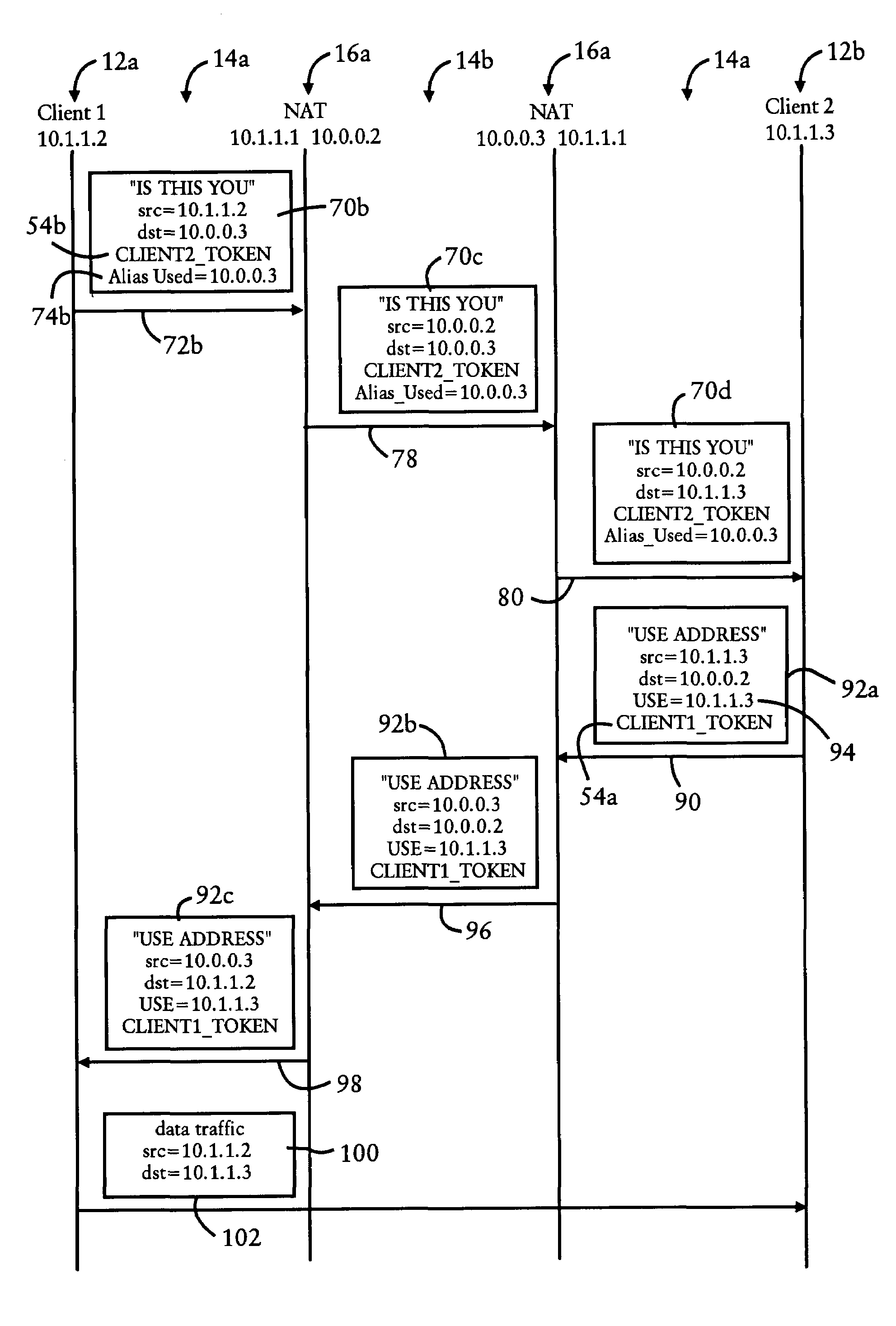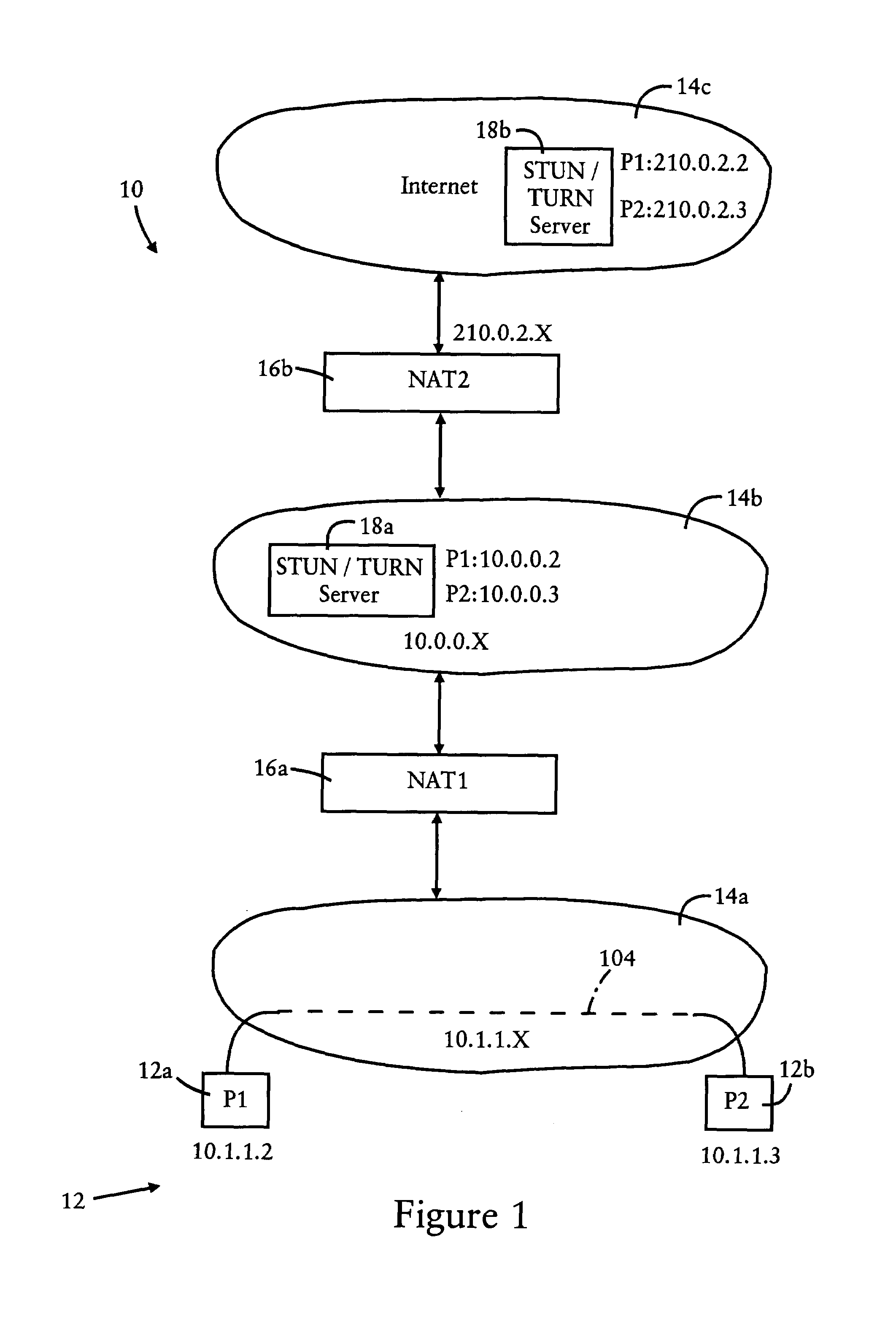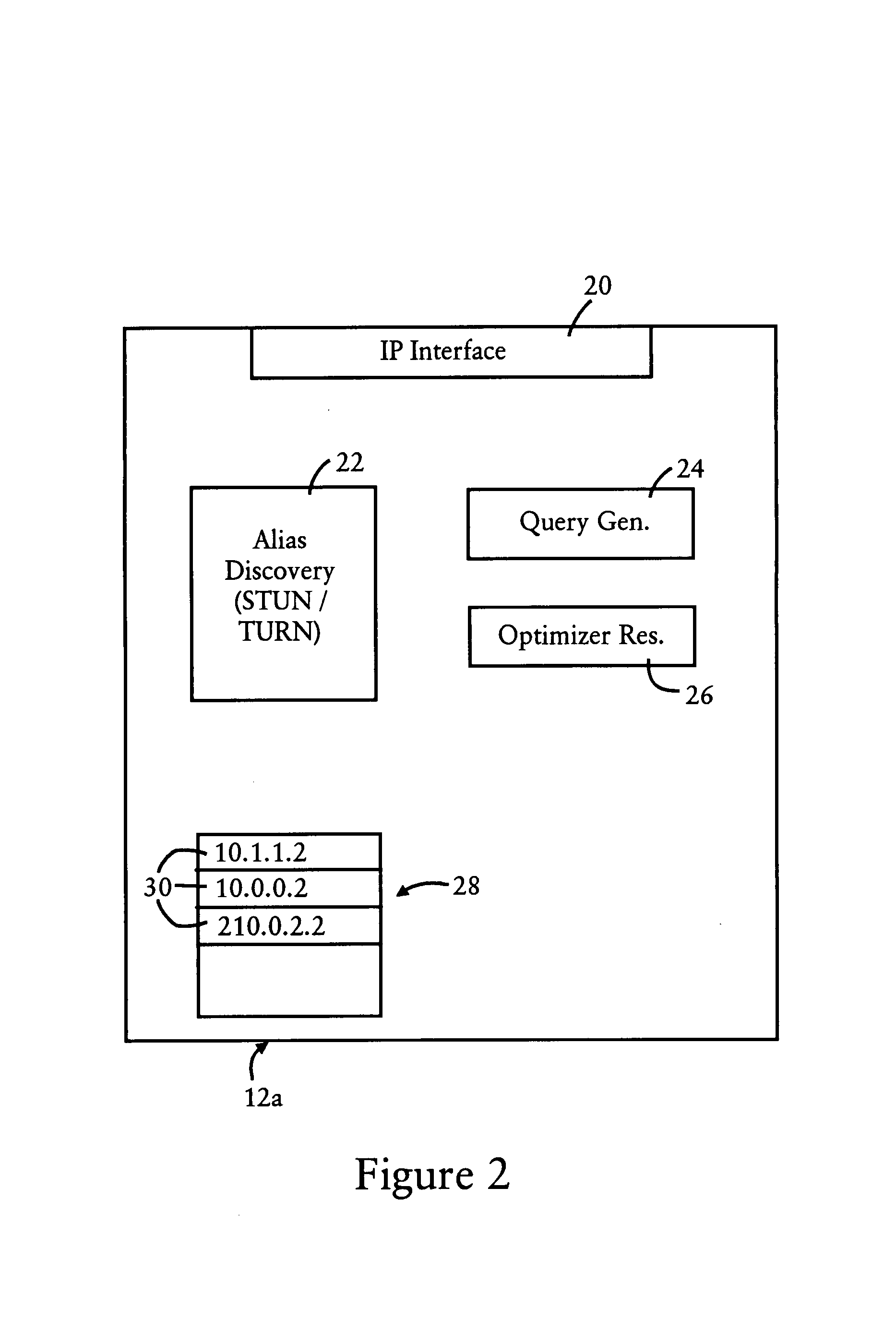Arrangement for discovering a localized IP address realm between two endpoints
a technology of ip address realm and localization, applied in the field of private network use of network address translation (nat)
- Summary
- Abstract
- Description
- Claims
- Application Information
AI Technical Summary
Benefits of technology
Problems solved by technology
Method used
Image
Examples
Embodiment Construction
[0027]FIG. 1 is a diagram illustrating optimal address realm selection by endpoints in a network topology, according to an embodiment of the present invention. The network topology 10 includes a private IP network 14a having its own assigned private address realm, for example “10.1.1.x”, where the symbol “x” refers to an address range between and including 0 and 255. The network topology also includes a second network 14b having its own distinct private address realm, illustrated as “10.0.0.x”. If desired, the private network 14b may be connected to a public network 14c, such as the Internet, that complies with the public IPv4 address assignment established by the IANA. As illustrated in FIG. 1, the endpoints 12a (“P1”) and 12b (“P2”) are assigned a local address “10.1.1.2” and “10.1.1.3” through a normal IP Address assignment mechanism, for example DHCP.
[0028]The networks 14a, 14b, and 14c communicate via NATs 16a and 16b that perform address translation between the respective addr...
PUM
 Login to View More
Login to View More Abstract
Description
Claims
Application Information
 Login to View More
Login to View More - Generate Ideas
- Intellectual Property
- Life Sciences
- Materials
- Tech Scout
- Unparalleled Data Quality
- Higher Quality Content
- 60% Fewer Hallucinations
Browse by: Latest US Patents, China's latest patents, Technical Efficacy Thesaurus, Application Domain, Technology Topic, Popular Technical Reports.
© 2025 PatSnap. All rights reserved.Legal|Privacy policy|Modern Slavery Act Transparency Statement|Sitemap|About US| Contact US: help@patsnap.com



